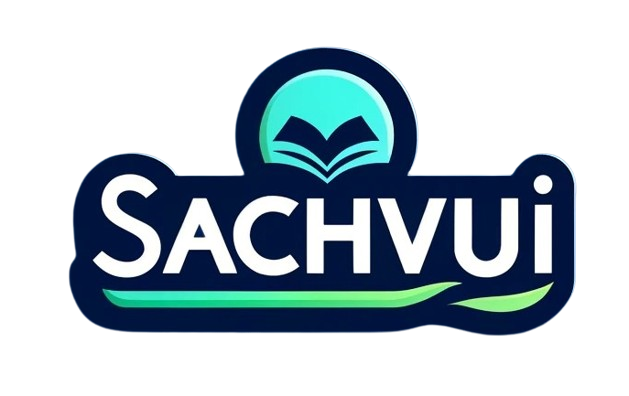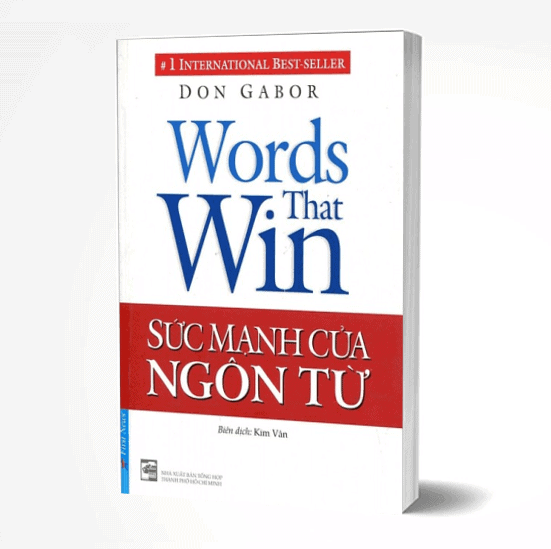You’ve finished your masterpiece and it’s time to upload it to the publishing marketplaces.
But here’s the challenge: Each marketplace (Amazon, Barnes & Noble, Kobo, etc.) has different file formats and requirements for authors. Plus, you need your book to look professional across all platforms: Kindles, Nooks, iPads, smartphones, etc. So, what format allows you to publish on multiple marketplaces and platforms with the least work?
All of these marketplaces and platforms accept EPUB, others accept PDF, and a few accept MOBI. Writers should know where they intend to publish their book, and what those marketplaces’ requirements are. Also, PDFs may be your choice if your story requires fixed formatting. It’s 2021. More and more avant-garde authors require unique formatting to tell their tale.
Between EPUB, MOBI/AZW3, and PDF, you should use whichever book format matches your intended marketplace. For instance, MOBI/AZW3 is mainly for distribution on Amazon’s marketplace and all Amazon Kindle devices. (But you may not need to save MOBI/AZW3 files yourself — more on that later.)
Proper formatting is your ticket to eBook publishing. If you’re publishing on multiple platforms, you’re going to need different kinds of formatting for each. But not to worry, this articles will break the process down for you.
What Book Format Should You Use: EPUB, PDF, or MOBI/AZW3?
In almost every case, you should start by using the EPUB file format for your book.
If you plan to distribute your eBook on the Amazon marketplace, you should use the current version of MOBI/AZW3 to ensure your eBook looks exactly like you intend on Kindle devices. The easiest way to do this is by uploading your EPUB file to Kindle Create via Amazon KDP.
Most other marketplaces accept EPUB files without the need for conversions.
PDFs may be your best option for graphically detailed eBooks/documents. PDF is the only file format of these three that maintains the fixed format of how graphics appear on the page. This also makes it more limited, but we’ll get into that later.
EPUBs and MOBIs reflow and resize all sorts of elements which may result in a huge change to the appearance you intended.
Which Marketplaces Accept Which Formats?
Amazon (and Kindle, obviously) accept MOBI/AZW3 in their marketplace (which you can convert from EPUB using their own platform).
Most other marketplaces accept EPUBs, and some accept multiple formats.
Kobo also accepts EPUBs and MOBIs. Apple Books and Google Play accept EPUBs and PDFs.
Here’s a side-by-side comparison of EPUB vs. MOBI vs. PDF and other formats, as well as which marketplaces use which format:
What Are the Differences Between EPUB, PDF, and MOBI?
So, this begs the question: What is the difference between EPUB, MOBI, and PDF?
EPUB is a universal eBook file format. EPUBs are reflowable, resizable, and can contain digital rights management (DRM) functionalities. Although Amazon used to reject EPUB files until they were converted to MOBI files, they now accept EPUB files onto their Amazon Kindle marketplace. (They basically convert EPUB files to MOBI files when they’re put on Kindle.)
MOBI is the remnant of an eBook company Amazon bought eons ago. The MOBI name and file format are mostly obsolete, but its descendants (such as AZW, AZW3, and KFX) continue on as Amazon Kindle’s file format of choice. Many people in the biz still say “MOBI” when they mean “AZW3” or “KFX”.
PDF is the most printer-friendly file format. This means your graphically detailed manuscript remains as graphically detailed as you intended. However, because PDFs are fixed format, they don’t resize or reflow well.
EPUB — The Gold Standard for eBook Publishing
An EPUB file in the most common document format for eBooks and other multimedia files. EPUB stands for “electronic publication.” An EPUB file is actually an archive file consisting of XHTML files that carry your content. Based on HTML and CSS, EPUB is free, open-source, and open standard.
Created and certified by the International Digital Publishing Forum (IDPF) in 2007, EPUB is the most widely supported vendor-independent eBook format. Simply put, more eBook readers can read EPUB than any other format in the world.
EPUB 3.2 was released in 2019 — the most recent update, as of 2021.
The Book Industry Study Group has endorsed EPUB 3 as the format of choice for eBooks worldwide.
Have you ever read an eBook that was a pain to read? (And I’m not talking about James Joyce’s Ulysses.) If you found yourself constantly resizing the text and layout of your e-reader, you probably weren’t reading an EPUB. EPUB files automatically adjust to the size of your device — be it a smartphone, tablet, laptop, or e-reader — so that you have a great reading experience. This is called “reflowable,” and it’s pretty great.
EPUB files are:
- Reflowable
- Resizable
- Fixed-layout
- Good for highlighting, bookmarking, and even changing background colors
- Friendly with inline raster and vector images
- Able to contain DRM as an optional layer
- Used by virtually all eBook readers
Is EPUB better than MOBI? Yes, EPUB is better than MOBI in most circumstances. The only advantage to MOBI is that Amazon’s format is automatically protected by DRM, whereas DRM is an optional layer in EPUB files.
Amazon now accepts EPUBs on its marketplace but converts EPUB to MOBI during upload.
What Are the Pros and Cons of Using EPUB?
Pros for using EPUB files:
- EPUB files are open source.
- When compared to other eBook formats, EPUBs are just easy (both to create and edit).
- Virtually all publishers accept EPUB books on their marketplaces.
- Virtually all eBook readers open EPUBs, including the Nook, Android devices, Apple Books, Sony Reader, Adobe Digital Editions, and so many more.
- With the ability to highlight, resize, and bookmark, EPUBs are very reader-friendly.
- You can easily add multimedia to EPUB files, like tutorial videos, illustrations, and just about anything else you can think of.
- Since it’s based on HTML, it’s highly adaptable.
- If you’re using Google Docs, you can download your doc as an EPUB — unlike MOBI/AZW3. Evan large docs can be downloaded as EPUBs — unlike PDFs.
Cons of using EPUB files:
- Amazon Kindles cannot read EPUB files. However, you can now quickly convert an EPUB to a MOBI, or one of its modern descendants, like the AZW3. You don’t even need a third-party conversion tool — it’s all done within KDP/Kindle Create.
- Digital rights management (DRM) protection is an optional layer in EPUBs, meaning this anti-piracy functionality is only present in some EPUBs, not all.
When Should I Use EPUB?
You should use EPUB as your primary choice whenever you want to publish an eBook. Virtually all publishers accept EPUB eBooks, and they’re very author-friendly and reader-friendly.
Even Amazon accepts EPUB eBooks. However, they immediately convert them to their own file format: AZW3 or KPF (the newest versions of the file format previously known as MOBI). This may mess with your eBook’s formatting. Most of the time, this doesn’t happen, but that’s why it’s important to review formatting when you upload your book to KDP.
If you’re publishing with Amazon’s Kindle Direct Publishing, use Kindle Create to make your eBook into a KPF so you can ensure your eBook looks exactly like you want it on a Kindle device.
Is EPUB or PDF better? EPUB is better than PDF for eBooks. PDFs may be better for printing and possibly graphically detailed eBooks, but EPUBs are designed to be reflowable, resizable, and reader-friendly. PDFs are not really designed to be read as eBooks.
Extra Resources for EPUB
- EPUB Format Advantages and Limitations
- How to Open an EPUB File
- EPUB 3.0 Advice from the International Digital Publishing Forum
MOBI (AZW3/KPF) — Amazon’s Proprietary Format
A MOBI file format (Mobipocket eBook format) is designed for eBooks, but mostly for Amazon Kindle. An AZW3 file is also designed for eBooks on the Amazon Kindle and was released alongside the Kindle Fire reader in 2011.
Amazon and its Kindle platform dominate the book market. There is no comparison. Naturally, Amazon has their very own eBook format — MOBI. The name is from when they bought Mobipocket in 2005. Amazon kept them running until 2016, then Mobipocket was permanently shut down.
Amazon’s history with file formats is admittedly complicated:
- Amazon Kindle still recognizes the MOBI file format.
- Another file format created by Mobipocket software, PRC files, is no longer supported by Amazon.
- AZW files debuted in 2007 with the first Amazon Kindle.
- AZW3 files debuted in 2011 with the Kindle Fire. AZW3s are also known as Kindle Format 8 (KF8).
- In 2015, Kindle Format 10 (KFX) was released with updated layout and typesetting abilities.
- Kindle Package Format (KPF) is a variant of KFX. On Kindle Direct Publishing’s support page, they recommend using KPF for your eBook.
Is the MOBI format dead? No, the MOBI format is not (technically) dead. However, it is outdated and on its way out. Amazon continues to accept MOBI formatted eBooks. And all Amazon’s file formats are based on MOBI’s legacy format.
AZW and its predecessors are essentially the same as MOBI, but with a different name and DRM (Digital Rights Management) scheme. In a nutshell, the AZW upgrade made MOBI files safer. It locks an author’s purchased work to a buyer’s account, therefore protecting your work from those nasty digital eBook pirates.
Important: PRC files created with MobiPocket Creator are no longer supported by Amazon.
Why would an author still use the MOBI format for a book? An author might still use the MOBI format for a book if they were comfortable with the old format. But nowadays, it’s safer to use AZW3 (and its later variants) for its anti-piracy functionality and smaller file sizes.
When Should I Use MOBI Files?
You should use MOBI files (or their modern cousin, AZW3 files) when you’re publishing on Amazon’s marketplace or when you want to sideload your book (like for advanced reader copies).
Kindle Direct Publishing recommends you use Kindle Create to make your eBook into a Kindle Package Format (KPF) file — which is a descendant of the MOBI and AZW3 file formats. A KPF helps you see exactly what readers will see, and lets you edit the format and look of your eBook with a myriad of easy tools.
What Is Sideloading?
Sideloading means transferring a file from one device to another, similar to “uploading” and “downloading”. This transfer may occur over WiFi, Bluetooth, or by a USB drive or app.
Sideloading can be associated with pirating books and other media because it’s done without purchasing the book directly from a platform. However, authors often use sideloading to distribute advanced reader copies (ARCs) before their book is publicly available for purchase.
MOBI files are very easy to sideload onto a Kindle. You should be able to connect your Kindle device to your computer over your WiFi network, then drag and drop MOBI files from your computer onto your Kindle. Even easier — you can download a number of MOBI sideloading apps, such as Amazon’s Send to Kindle app, to drag and drop files from anywhere onto your Kindle device.
How to Check Book Formatting for Amazon via KDP
It might be an extra step, but when you want to check your eBook formatting for Amazon/Kindle Direct Publishing, you really should use Kindle Create.
Kindle Create allows you to view and edit how a reader will see your eBook on a Kindle device. And when you’re finished with your thrilling manuscript and eye-catching cover, use Kindle Previewer to see how your eBook will look when you publish it.
Extra Resources for MOBI
- How to Open a MOBI File
- How to Read AZW3 Files on PC or Mac
- About AZW3 Files
PDF — The Print-on-Demand Solution
The Portable Document File (PDF) is a file format that debuted in 1993, and it’s still one of the most recognizable and widely used file formats in our modern world. It is most helpful in creating printer-friendly documents. However, there are rare situations when you want to format your eBook as a PDF.
What Are the Pros and Cons of Using a PDF?
A PDF is not really a true eBook. It’s a print-type document with a fixed layout.
Pros for using a PDF as an eBook:
- PDFs are fixed format. This means they will appear the same no matter what size screen you are on. This may be a negative in some cases, but you may desire a PDF’s fixed format for graphically detailed manuscripts that would not translate well when reflowed, like EPUBs and MOBIs do.
- Most electronic devices can open a PDF with built-in software — more programs than can open an EPUB or certainly a MOBI/AZW3.
- PDF format may be the way to go if you’re looking to print your eBook, which many authors still do. This is where POD (Print on Demand) services come in handy. Companies such as KDP Print and IngramSpark are two popular choices. These companies print what you need when you need it without having to amass a surplus of print books — and they require PDF files to do it.
Cons for using a PDF as an eBook:
- PDFs are not reflowable or resizable. If a reader tries to zoom in, or read on small screens, a PDF may look wrong or be illegible.
- PDFs are not designed to be eBooks.
- Barnes & Noble Press (and the Nook) does not accept PDFs on its online marketplace.
When should I use a PDF?
You should use PDFs if you need a specific format for your eBook, or if your manuscript is graphically detailed.
For instance, House of Leaves by Mark Z. Danielewski comes to mind. Part of the storytelling in House of Leaves is the strange, unique formatting. If you search “House of Leaves EPUB”, you will only find PDFs available for purchase.
PDFs can be accessed on virtually any device. They are the most universal of the three formats. But just because the devices can open them doesn’t necessarily mean they should.
Again, PDFs have one major disadvantage that may lead you to consider another format: PDFs are not reflowable. They don’t play nice with any device except a printer. They don’t resize or alter when swapping from one device to another. This can make PDF files extremely awkward to read on an e-reader, tablet, or phone. Font size will be too tiny for many devices.
Extra Resources for PDF
- How to Open a PDF
- More Info on PDFs
- Find PDF eBooks!
How to Convert EPUB to MOBI
To convert EPUB to MOBI, you can use free online tools like CloudConvert, Zamzar, or Covertio.
To convert MOBI to EPUB, you can use the same tools: Zamzar, CloudConvert, Convertio. A simple Google search should turn up safe and reliable tools to convert your files.
You can also download Calibre for free. It converts many file formats into other formats, including EPUBs, MOBIs, and PDFs in both directions.
Book Formatting Tools to Create EPUB, MOBI, and PDF Files
Below are some of the best tools and services for formatting eBooks into various file formats.
Vellum
Vellum is an all-in-one eBook development tool for Mac. (Sorry, Windows users.)
It can help you with every aspect of your eBook, including formatting but going way beyond that. I recommend this software for any author using Mac.
Draft2Digital
Draft2Digital (D2D) is a really useful and powerful book aggregator. They offer a simple and elegant formatting service as well.
Just upload your MS Word-readable document to D2D, and they take care of the rest. Afterward, it can easily be distributed to any of D2D’s partners.
Ebook Launch
Ebook Launch handles everything from illustrations to front matter to hyperlinks.
This service comes with a 100% guarantee that your eBook will be properly formatted for most major book retailers and aggregators, such as Amazon KDP and Smashwords.
Kindle Create
Amazon’s marketplace is the most promising frontier for aspiring authors. So it’s fortunate that Amazon offers its Kindle Create service to view and edit what your eBook will look like before you publish it.
Using a selection of book themes, you can change the look and feel of your book before readers see it.
It’s also easy to create an interactive table of contents with Kindle Create — anything that improves the reader experience is a good thing.
Which eBook File Format Is Best For You?
The eBook file format that’s best for you depends on your individual situation, but most authors should definitely start with an EPUB file first.
Which is better: EPUB vs MOBI vs PDF? All 3 formats have their benefits:
- EPUB is the universal format accepted by virtually all publishers and read by virtually all e-readers.
- MOBI (and its descendants, like the KFX and AZW3) are best for publishing on Amazon’s Kindle Direct Publishing marketplace. You can convert an EPUB file to Amazon’s current format within KDP using Kindle Creates (no third-party conversion required).
- PDFs are a must if you have a graphically detailed manuscript and need a fixed format.
The easiest way to know which file formats you need is to go through a professional formatting company, such as Ebook Launch. With a service like Ebook Launch, you can choose multiple file formats to guarantee you have the right eBook format when the need arises.
That’s exactly what I do. I have all three formats available just in case I’m going to utilize Amazon (MOBI), other publishers (EPUB), or print (PDF). Each has its own individual strengths that must be considered.
Hopefully, this article has given you a better understanding of the benefits of each file format for your eBook.





![review sach marketing [Top 10] Cuốn Sách Hay Về Marketing Cho Người Mới Bắt Đầu tốt nhất review sách marketing](https://sachvui.co/wp-content/uploads/review-sach-marketing.jpg)